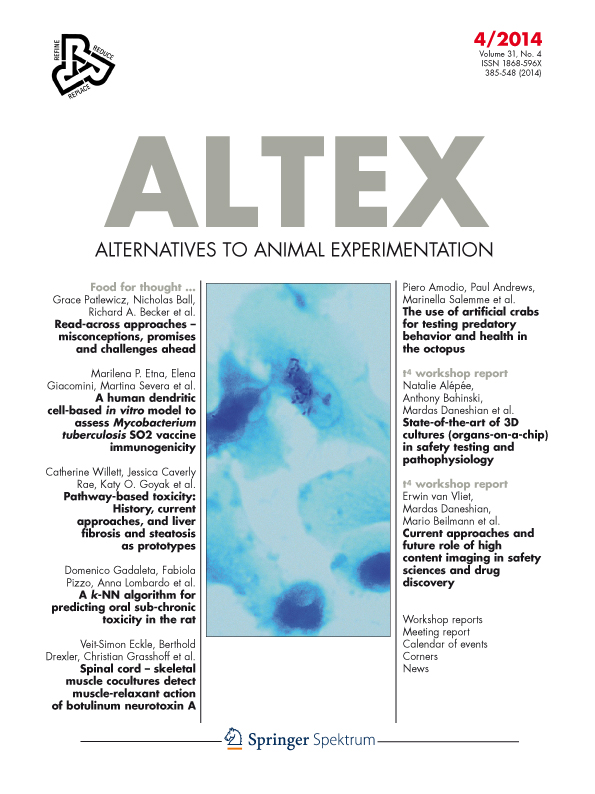Current approaches and future role of high content imaging in safety sciences and drug discovery
Main Article Content
Abstract
High content imaging combines automated microscopy with image analysis approaches to simultaneously quantify multiple phenotypic and/or functional parameters in biological systems. The technology has become an important tool in the fields of safety sciences and drug discovery, because it can be used for mode-of-action identification, determination of hazard potency and the discovery of toxicity targets and biomarkers. In contrast to conventional biochemical endpoints, high content imaging provides insight into the spatial distribution and dynamics of responses in biological systems. This allows the identification of signaling pathways underlying cell defense, adaptation, toxicity and death. Therefore, high content imaging is considered a promising technology to address the challenges for the “Toxicity testing in the 21st century” approach. Currently, high content imaging technologies are frequently applied in academia for mechanistic toxicity studies and in pharmaceutical industry for the ranking and selection of lead drug compounds or to identify/confirm mechanisms underlying effects observed in vivo. A recent workshop gathered scientists working on high content imaging in academia, pharmaceutical industry and regulatory bodies with the objective to compile the state-of-the-art of the technology in the different institutions. Together they defined technical and methodological gaps, proposed quality control measures and performance standards, highlighted cell sources and new readouts and discussed future requirements for regulatory implementation. This review summarizes the discussion, proposed solutions and recommendations of the specialists contributing to the workshop.
Article Details
Articles are distributed under the terms of the Creative Commons Attribution 4.0 International license (http://creativecommons.org/licenses/by/4.0/), which permits unrestricted use, distribution and reproduction in any medium, provided the original work is appropriately cited (CC-BY). Copyright on any article in ALTEX is retained by the author(s).


